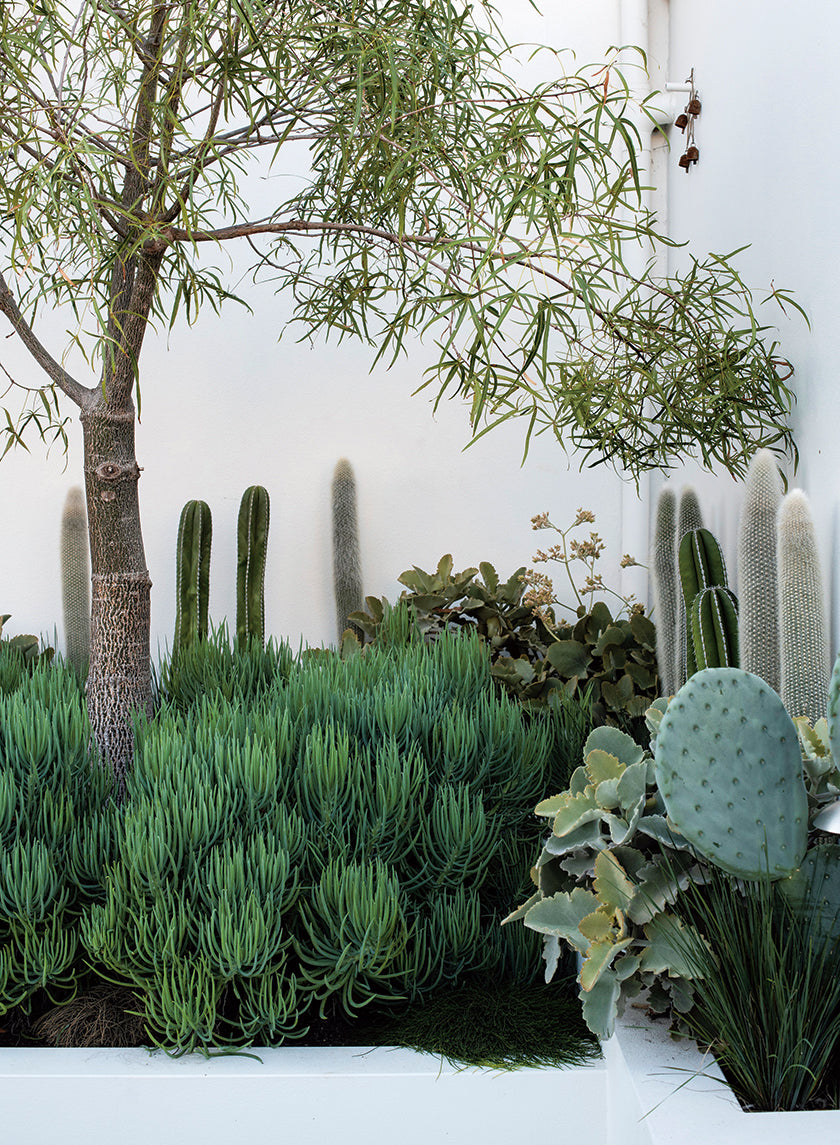Your Cart is Empty
When you buy a book, we plant a tree
The vigorous earthy tones and bold forms of an Australian garden as recounted by Abbye Churchill

In sunlight-drenched Sydney, a courtyard is transformed from a dark and dreary yard into a vibrant and water-wise living sculpture garden. When confronted with a client’s request to transform the dark and dreary entryway to their new home, Jane Stark of Sydney’s Stark Design took the challenge one step further. In lieu of ornamental flowers or traditional landscaping, Stark’s response was to create Superba Courtyard House, a “living sculpture garden.”

The client’s request for a dramatic and sophisticated entryway guided Stark’s design response. However, the design direction was also informed by the native architecture of the space. The entryway floats on a suspended concrete slab supported by a timber frame creating shallow soil conditions. Given the due north exposure and the hot and arid climate of Sydney, Stark elected to work with plants that could achieve a sculptural and architectural effect while also being able to thrive in these growing conditions.
“We wanted a bold plant palette which shone at night as well as during the day,” Stark shared. “Leaf shape and color were important given the lack of flowers. Shadow play of the leaf shapes both during the day and at night was also a design criterion.”

From the original entryway, Stark kept a narrow-leaved bottle tree native to the area and added a second to “give the garden gravitas” and to provide shade. She dotted the garden with drought-tolerant, low-maintenance native shrubs and international imports that thrive in shallow soil like Casuarina glauca ‘Cousin It,’ Adenanthos, Lomandra, Pratia, Aloe, Hebe, and Santolina, as well as various succulents and cacti. A low planter made of Corten steel—a favorite material of artists like Richard Serra, Donald Judd, and Barnett Newman—replaced a masonry planter. “This form breaks up the color palette, feels lighter than masonry, and relates to the rusty colors of some of the plants and the existing natural timber trim color on the house,” Stark explains.
Stark’s design choices were also informed by the desire to mitigate stormwater runoff and reduce the amount of additional watering needed. By reducing the hard surfaces with precast concrete floating platforms and increasing the surface area of the garden beds, rainwater can be naturally absorbed back into the gardens. Drainage cells were also placed underneath the artificial turf, which recaptures rainwater into storage tanks under the house. This water is then redistributed to the lower gardens of the house, reducing the environmental footprint of the garden.

The attributes of plant choice, cast concrete, and Corten steel create Stark’s vision of a living sculpture garden—and some of her smart choices can be considered when planning your own living sculpture garden.
Try mixing statement plants like Stark’s selection of two bottle trees with low-to-the-ground shrubs and ground cover to create maximal contrast. Follow her advice and think through the leaf shape and color when opting for a monochrome or limited-palette garden. And consider the effect that the natural or artificial lighting will have on the plants and the shadow play created therein. In short, light the garden like a gallery, and treat your plants like the living works of art they are.
Step into a world of innovative gardens and landscape designs creating greener spaces through The Gardens of Eden. Available in German and English.